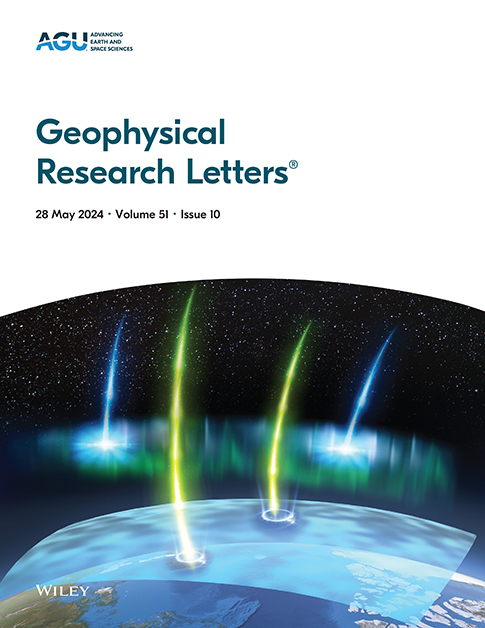磁层中的哨声合唱放大:非线性自由电子激光模型和金兹堡-朗道方程
IF 4.6
1区 地球科学
Q1 GEOSCIENCES, MULTIDISCIPLINARY
引用次数: 0
摘要
本文提出了一种基于自由电子激光(FEL)机制的哨声模合唱放大非线性模型。首先,我们推导了惠斯勒-电子相互作用的非线性集体变量方程。与原位卫星观测相一致,这些方程预测了一个小的种子波可以经历指数增长,在几毫秒后达到几百皮特斯拉的峰值,随后是毫秒级的振幅调制。接下来,我们证明了当考虑多个波频率和波空间变化时,哨声波的振幅和相位可以用Ginzburg - Landau方程(GLE)来描述,这为研究合唱模式的孤立波行为提供了一个框架。这些发现增强了我们对范艾伦辐射带中波粒相互作用和空间天气的理解,加深了哨声电子动力学与FELs之间的联系,并揭示了哨声模式合唱与GLE之间的新联系。本文章由计算机程序翻译,如有差异,请以英文原文为准。
Whistler Chorus Amplification in the Magnetosphere: The Nonlinear Free‐Electron Laser Model and the Ginzburg‐Landau Equation
We present a novel nonlinear model for whistler‐mode chorus amplification based on the free‐electron laser (FEL) mechanism. First, we derive the nonlinear collective variable equations for the whistler‐electron interaction. Consistent with in situ satellite observations, these equations predict that a small seed wave can undergo exponential growth, reaching a peak of a few hundred picoteslas after a few milliseconds, followed by millisecond timescale amplitude modulations. Next, we show that when one accounts for multiple wave frequencies and wave spatial variations, the amplitude and phase of the whistler wave can be described by the Ginzburg‐Landau equation (GLE), providing a framework for the investigation of solitary wave behavior of chorus modes. These findings enhance our understanding of wave‐particle interactions and space weather in the Van Allen radiation belts, deepen the connection between whistler‐electron dynamics and FELs, and reveal a novel connection between whistler‐mode chorus and the GLE.
求助全文
通过发布文献求助,成功后即可免费获取论文全文。
去求助
来源期刊

Geophysical Research Letters
地学-地球科学综合
CiteScore
9.00
自引率
9.60%
发文量
1588
审稿时长
2.2 months
期刊介绍:
Geophysical Research Letters (GRL) publishes high-impact, innovative, and timely research on major scientific advances in all the major geoscience disciplines. Papers are communications-length articles and should have broad and immediate implications in their discipline or across the geosciences. GRLmaintains the fastest turn-around of all high-impact publications in the geosciences and works closely with authors to ensure broad visibility of top papers.
 求助内容:
求助内容: 应助结果提醒方式:
应助结果提醒方式:


